Barcelona are going through a very difficult period. The LaLiga titans have a depleted squad that is transitioning from a star-studded team to one increasingly putting their trust in the youth, for better or worse. However, even in these dark times for the club, players like Riqui Puig are not getting enough game time to properly develop.
In his recent meeting with the press, Ronald Koeman has spoken about the youngster, suggesting he still has to improve on a lot of aspects to be ready for regular first-team action, prompting an outburst from the fanbase. So this tactical analysis will be a scout report on Puig but one focusing on uncovering the flaws in his profile.
Player overview
Before we start the analysis, we first have to understand what kind of a player Puig really is. Standing at 5ft 5in (169cm) and weighing 56kg, the 22-year-old midfielder does not have a big physical frame. However, he’s the prototype Barcelona diminutive midfielder with incredible technical ability, close control, vision and understanding of the Barcelona style of play.
Below is a graphical representation of his player profile, albeit with data taken from his last full season at Barcelona B. We decided to go for his 2019/20 profile because the 2020/21 and 2021/22 seasons didn’t give us a big enough sample with Puig playing south of 500 minutes in both.
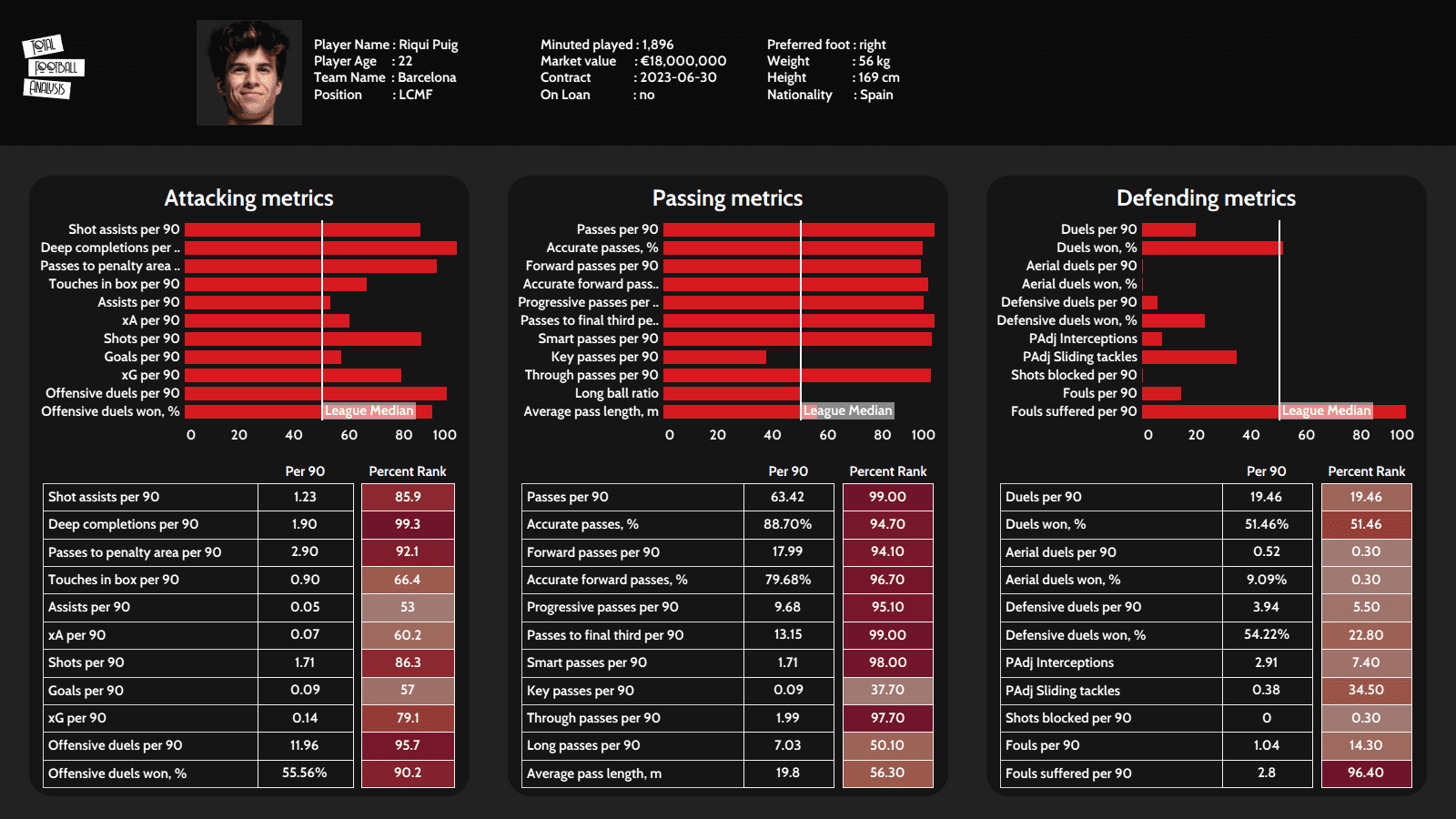
But looking at the percentile rankings, we can see that there’s not much Puig can’t do on the ball. When it comes to attacking and creating danger, he was next to none down in Segunda B and clearly playing on too low of a level. When it comes to going forward, the only thing he doesn’t excel at is the final product.
Puig is not much of a goal-scorer or assister but is still incredibly creative and aggressive on the ball. He will shoot a lot when given a chance and likely deploy all sorts of different passes except key ones. This could indeed be seen as a flaw in his profile but it also depends on the role he is given within the tactics of his team.
Some of the weaknesses are also not clearly visible from the numbers. The final product, defensive contribution or key passes are palpable but there’s more to football tactics than what can be measured.
So without further ado, let’s start this scout report by looking at three major areas Riqui Puig needs to improve on.
Decision-making in possession
Decision-making is such a broad and largely difficult aspect to quantify in football. There’s no single metric to tell us how good a player is in making split-second decisions so a review of a large sample is usually required to solve it. In Puig’s case, his high football IQ and positional awareness via scanning mean he knows what space to occupy and what space needs to be exploited most of the time.
However, for a young and highly technical player, Puig often holds onto the ball for far too long, opting to run with it into traffic instead of releasing it in one or two touches. This is a big flaw as he can easily increase the tempo of the game better than most players in Barcelona’s talented squad.
This aspect is also closely related to Puig being heavily right-footed and usually deployed as the left centre-midfielder. That means the 22-year-old will preferably cut onto his right foot and dribble towards the centre of the pitch rather than spraying the ball wide in a short and swift sequence of play.
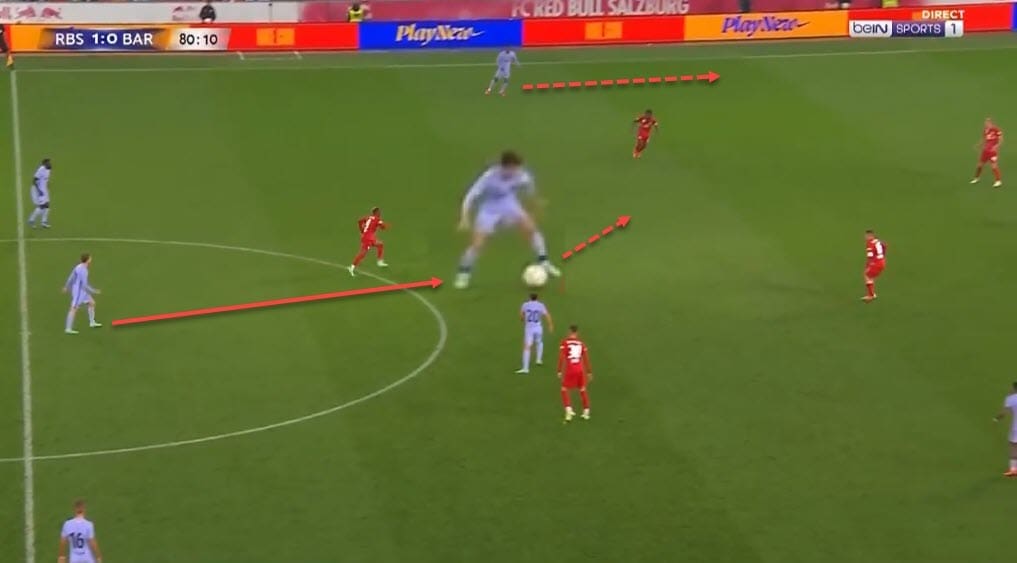
In the example above, we see Puig’s signature ball reception where he lets it slide across his body as he opens it up to immediately turn. This is an incredible ball progression tool but it’s the follow up to that that is still lacking in execution.
Note in the following image how Puig has a clear outlet on the left-wing which was accessible through a mostly simple pass. Instead, he hogs the ball for far too long and steps into traffic, soon to be collapsed upon by three markers.
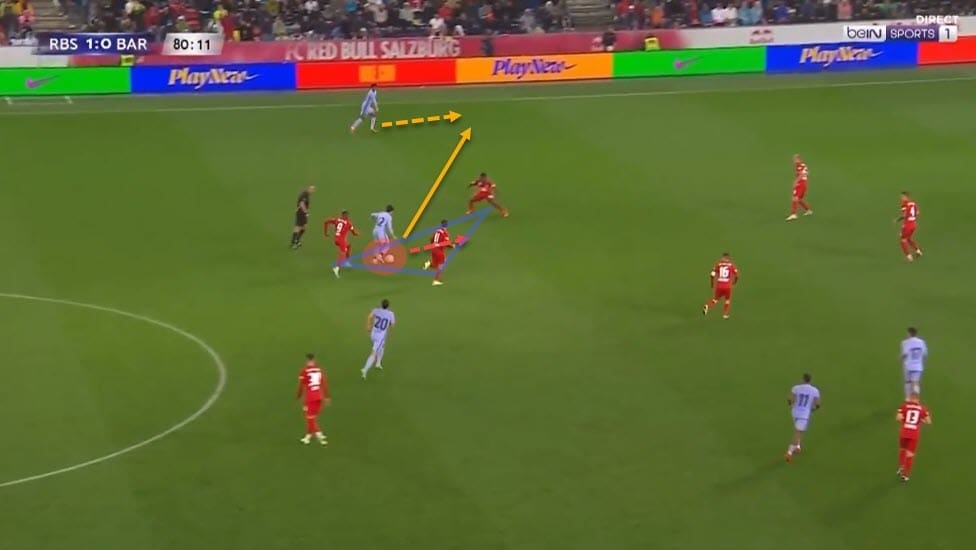
The tendency to cut onto his right foot may be slightly worrying when a split-second decision is needed to be made. As was already mentioned in this tactical analysis, Puig is an extremely efficient passer and can increase the tempo easily. However, these sequences often unintentionally slow the tempo down, sometimes to the detriment of Barcelona.
Below is another example of a very similar case. Puig receives the ball between the lines, which is his preferred area of operation, and then drives forward. But upon reaching the box, instead of quickly recycling possession out wide and putting his teammate into an isolated duel in the penalty area, he opts to cut inwards, breaking up the attack.
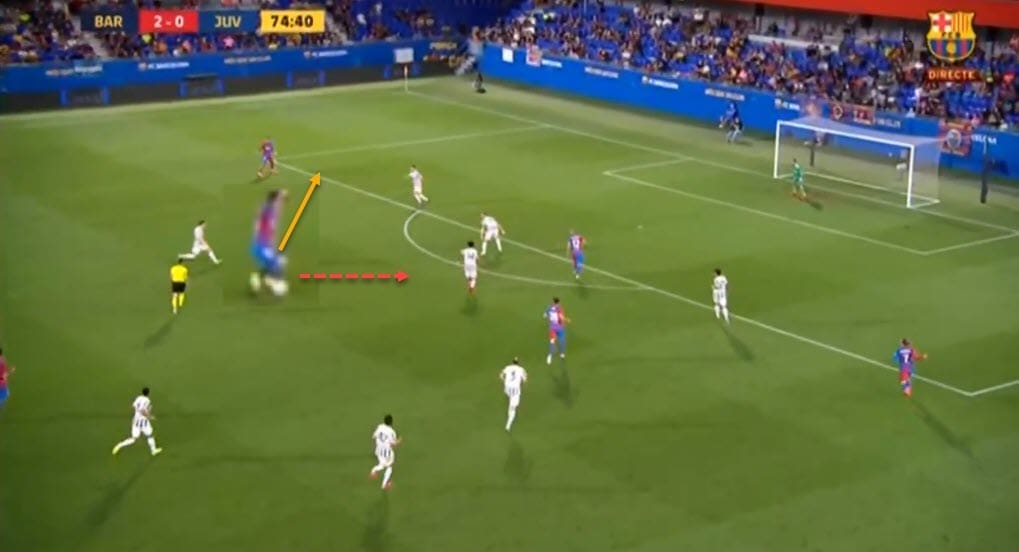
He might get a foul in a favourable position in some cases but the fact remains it slows down the attack and stops a potentially dangerous sequence from unfolding. And the problem is that these situations happen in deeper areas as well.
In the following image, for example, Puig receives the ball between the lines from his centre-back. Usually, in such scenarios we’re used to him receiving on the half-turn, immediately advancing possession higher up the pitch. However, here, he controls the ball with a heavy first touch and opts to run with it backwards towards his backline.
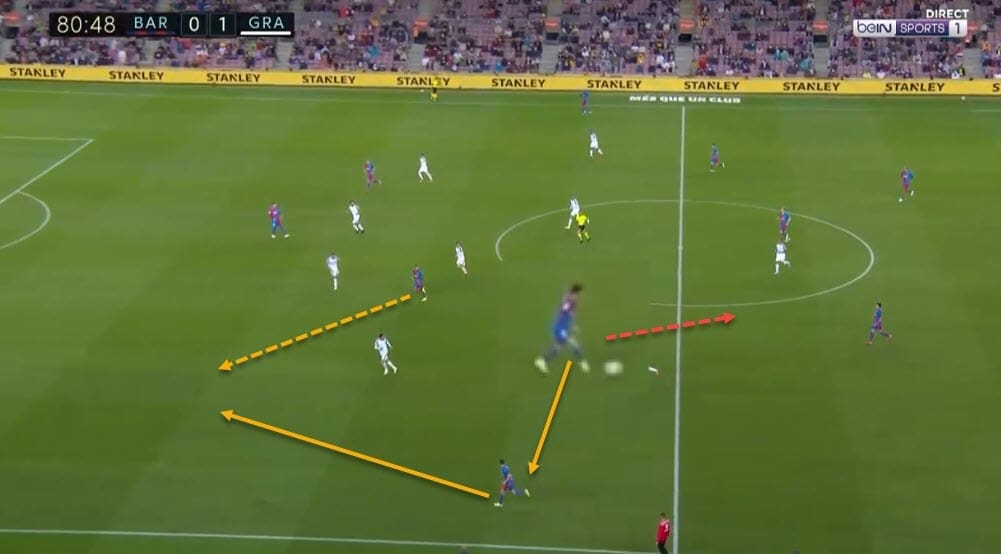
The preferred sequence is shown in gold. It is very difficult for a right-footed player to switch play to his left-back with his right foot unless his body is either facing the flank or he plays a surreal swirl with the outside of his foot. However, going for a negative pass in this situation without trying to turn or attempting a left-foot pass again kills the momentum of the vertical sequence.
Here in the next image, again, he receives the ball deep and instead of immediately trying to recycle possession and change the angle of the attack, Puig twists and turns in place only to play that same pass, only three or four touches later.
These sorts of sequences slow down the tempo immensely and ball hogging lets the opposition settle in their defensive shape.
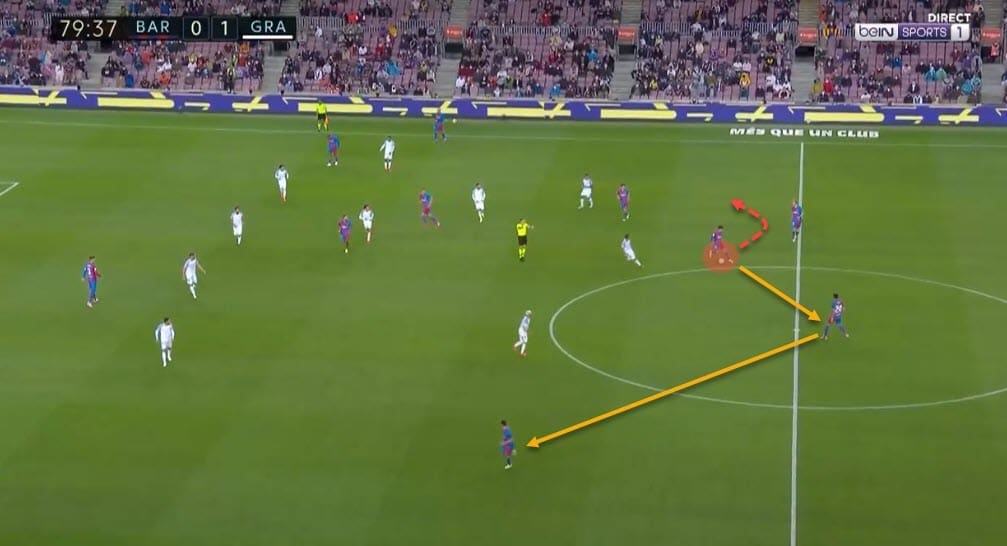
It’s very harsh to expect a young player to always make the perfect decision at every given moment. However, for someone of his technical quality and footballing IQ, mastering decision-making is likely the next step in his development.
Space occupation
Another aspect unmeasurable by data is space occupation. Again, this is heavily impacted by context. Players in the same position may have different roles, which, in turn, means they have to move and act accordingly. At Barcelona, the left-sided central-midfielder is usually the creative spark in the central trident.
Players in the mould of Pedri, Andrés Iniesta or Puig are tailor-made for that role due to their incredible on-the-ball ability. Usually, profiles that occupy that area are diminutive, highly technical with impeccable close control and agility to progress, unlock deep defensive blocks and create danger.
So space occupation and subsequently exploitation are very important for someone like Puig. We’ve mentioned his scanning and due to the fact he’s constantly aware of his surroundings, the 22-year-old knows how to open new passing channels for his teammates.
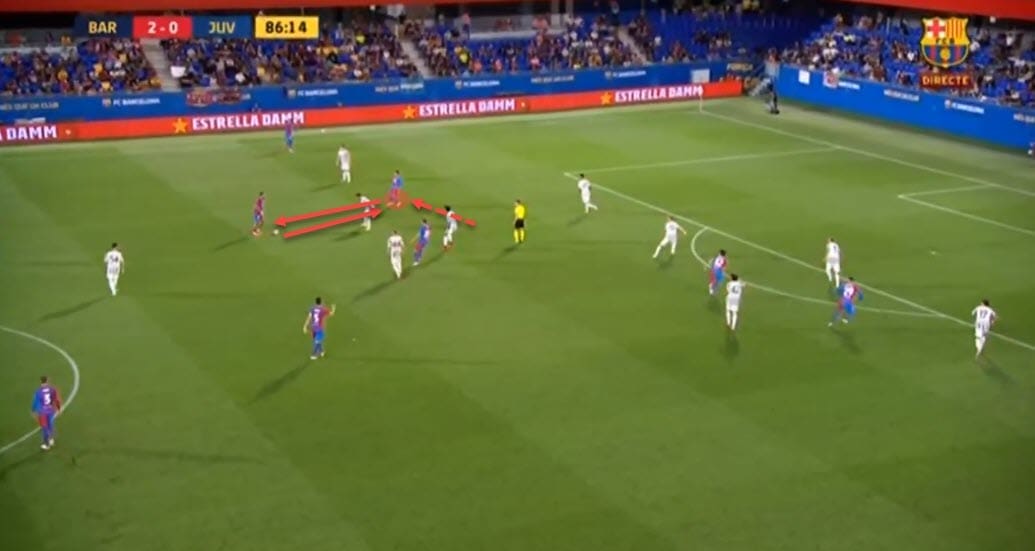
However, while his initial movement here is good, the decision to immediately pass back stops the attack and Barcelona lose possession shortly after. This may be more of an example of decision-making and the player being heavily right-footed, hence making the link-up with the left-back difficult, but it also shows us he knows where to move to advance play.
Still, it remains an area he would have to improve. Let’s look at the following example to showcase this a bit more closely. Here we see Puig come close for the ball, as he often does, despite not creating any sort of advantage through that action. Sure it makes the initial pass easier and less risky but it doesn’t do much to advance play or unlock the opposition’s defensive block.
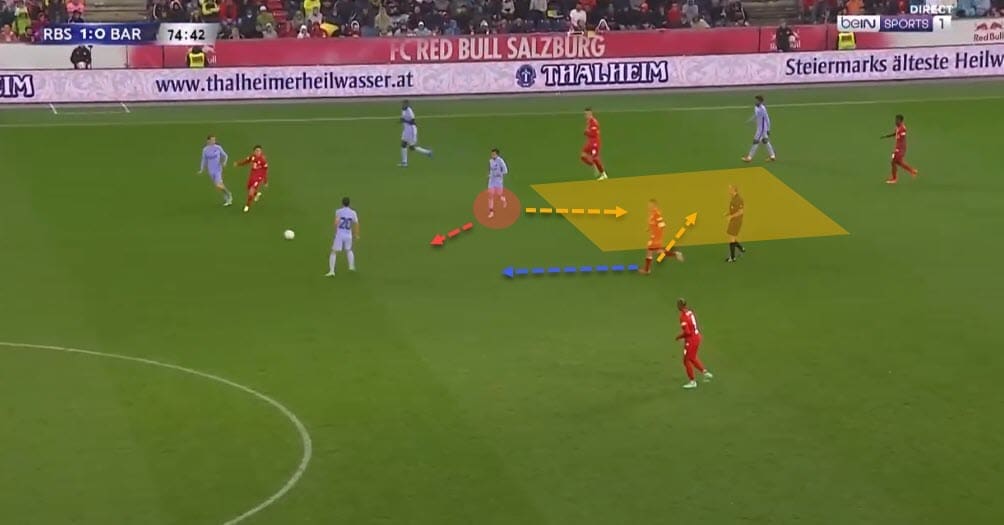
Moving higher up would likely have dragged the marker with him or at the very least put him in a decisional crisis. But moving towards the ball in this scenario means the defender also has to move one way to potentially cover both players and the area behind his back remains unoccupied.
We know Puig is capable of receiving on the half-turn and does it so well and that’s why it would’ve been beneficial for him to remain higher and stay between the lines. Even if the ball never reaches him, he would still force the opposition to be vigilant of him, thus relieving the pressure off of his teammate in possession.
And this tendency to move towards the ball is a trait of his. The next example shows us another instance when exactly that has failed to provide an advantage for the Catalans. Here, Puig deploys a good vertical pass and instantly moves closer to his teammate up front.
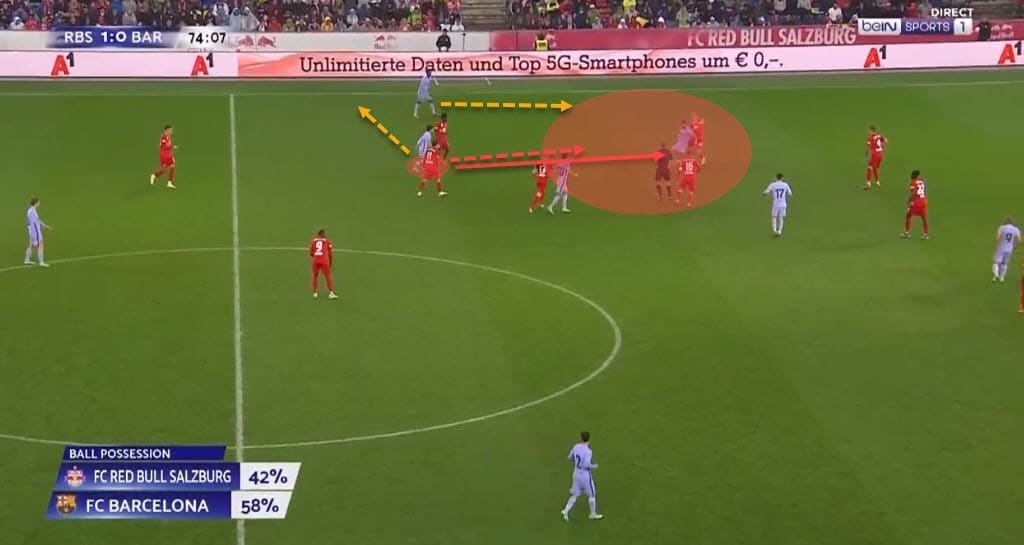
However, that puts the two Barcelona players too close to each other. In other words, it makes it easier for the opposition to mark both of them at the same time. Instead, what coaches usually want from their interiors in such situations is that they let the full-back overlap and provide defensive cover behind them, if, of course, the full-back has attacking qualities.
This also depends on the situation but moving towards the ball yields Barcelona little to no advantage in this particular scenario. Puig is very positive in his movement most of the time, meaning he’ll make penetrative runs towards the final third and the box when the opportunity arises. However, knowing when that is beneficial to the team and when it is not is very important for his development.
In the next sequence, he opts to drop deeper to receive the ball from the full-back and once again, it nullifies Barcelona’s advantage. Instead of trying to drag the marker away to destabilise the deep block, his movement outside of the block lets the opposition remain compact.
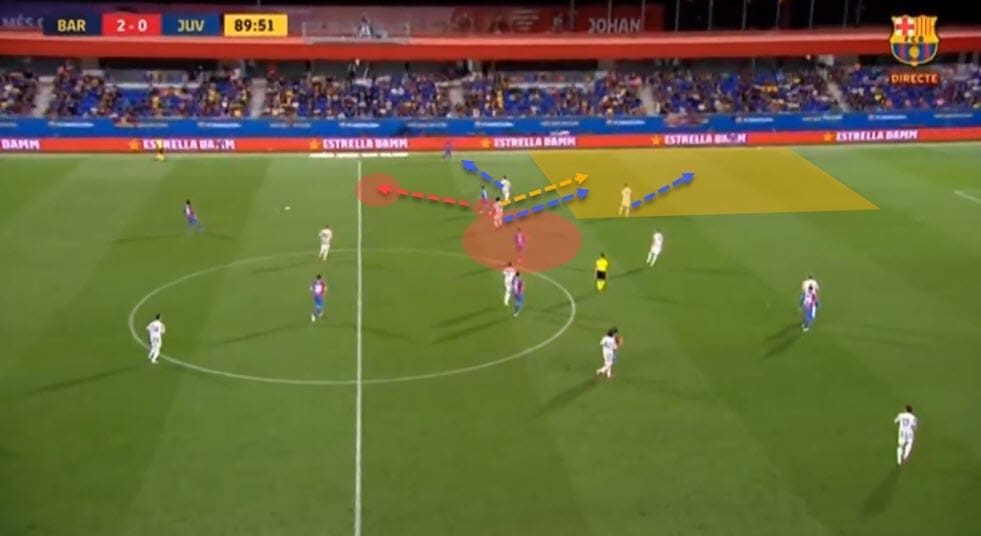
His movement makes it much easier for Juventus to cover the left flank and Barcelona lose the window to potentially open a central passing channel to Memphis Depay (marked in red behind Puig) had Puig dragged the marker away.
We can see how Juventus easily retain their shape as the youngster receives outside the block and is forced to recycle possession towards the other side. Note that this sequence still unlocks Bianconeri’s defence and Barcelona create a good chance at goal. However, a cheeky backheel from the pivot was needed to quickly change the angle of attack, which is something you can’t expect to happen every game.
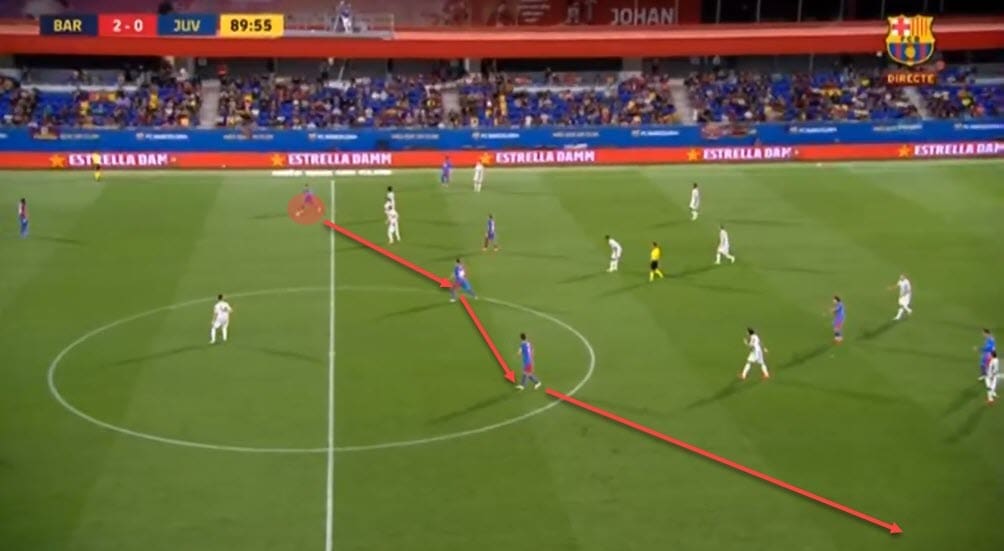
Moving forward or backwards heavily depends on the needs of the team and the space players occupy play a huge role in creating advantages. Puig reads the game well and can impact it positively but situations like these are still holding him back.
Defensive discipline
Given his diminutive frame, Puig’s defensive contribution has been an obvious area of his profile critics usually attack. And looking at the data, it is quite clear he’s not as involved as maybe he should be but numbers can also be misleading. The eye test confirms he is indeed very active, aggressive and a hard worker out of possession.
However, while all of that is commendable, what he is lacking is tactical defensive discipline. In other words, knowing when to press, how to recognise proper triggers and staying vigilant at all times. Puig will often forget his man and hence be late for the challenge.
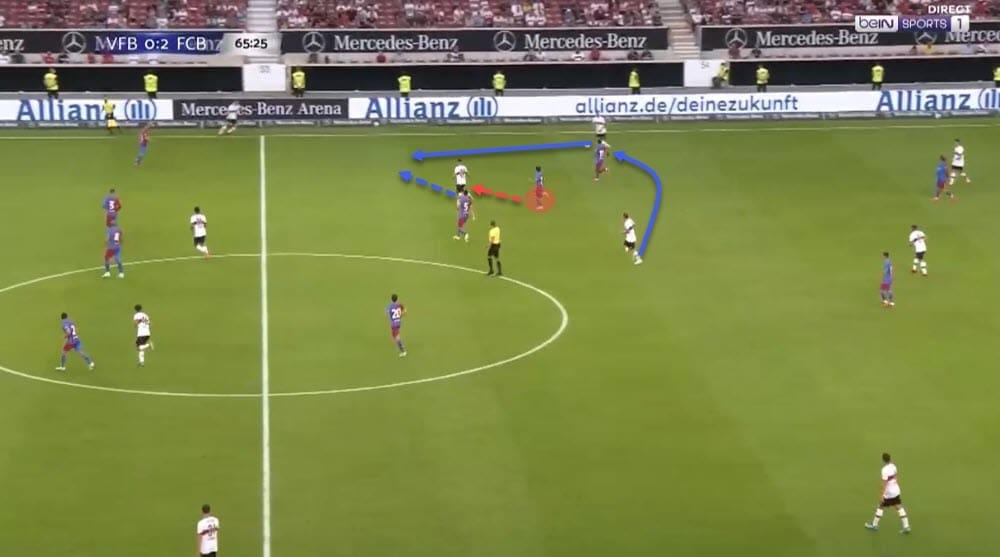
In the example above, for instance, he runs with his man but only starts accelerating once it’s already far too late, failing to properly track back. Again, he will track back and will put in the work, aggressively attacking the ball and the man in possession but it has to be timed well and he can’t afford to switch off like that.
Here, again, Barcelona are trying to regain possession high up the pitch and Puig is caught ball-watching instead of tracking his man. This lets Granada pick out a target next to him and manage to escape the pressure for the time being.
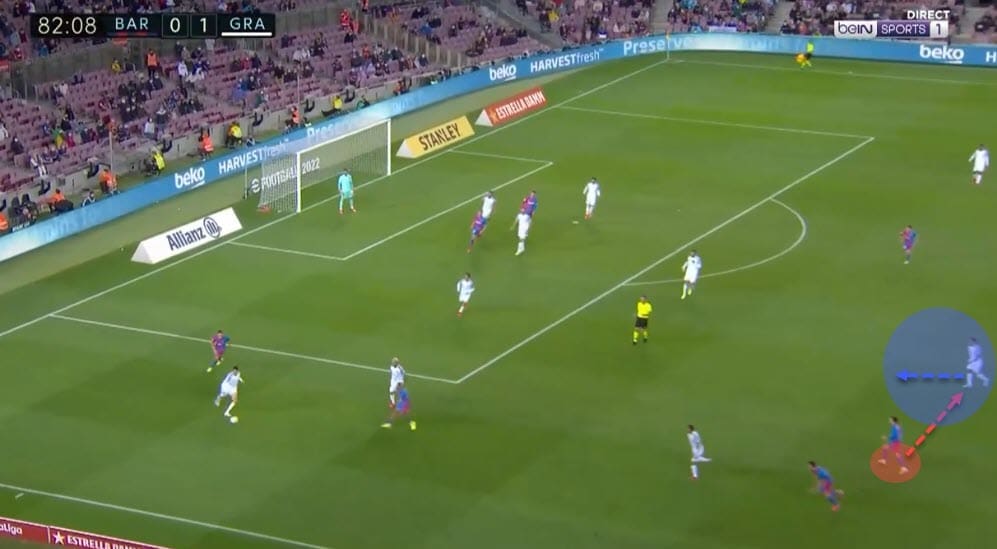
But let’s explore his willingness to press, albeit in a detrimental way. If the team is not on the same wavelength, a single link breaking off can cause the whole chain to collapse. Barcelona are a team whose high-press is lacking in many aspects but they’re still trying to deploy it at least during some periods of games.
In the next sequence, we see Puig instigate a high press by chasing the ball and the ball carrier to the byline. However, the rest of the team is not in a position to follow up properly and this forces them to push up to stay compact.
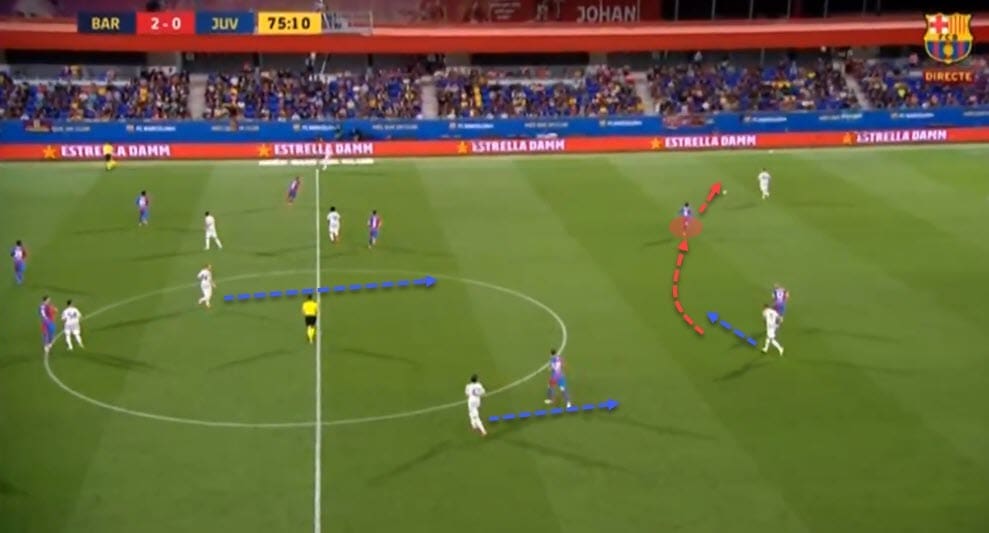
But Puig’s movement higher up has created a gaping hole behind his back that Barcelona can’t cover in time. The ball is then recycled back to the goalkeeper and then back into the free space left by the youngster by breaking his team’s defensive block.
Notice how this overloads his teammates deeper on the pitch and makes progression for the opposition that much easier to achieve. You could argue that Barcelona were poor at plugging holes in the structure in the first place but Puig’s ‘rogue’ pressing has made the gap bigger than it would normally be.
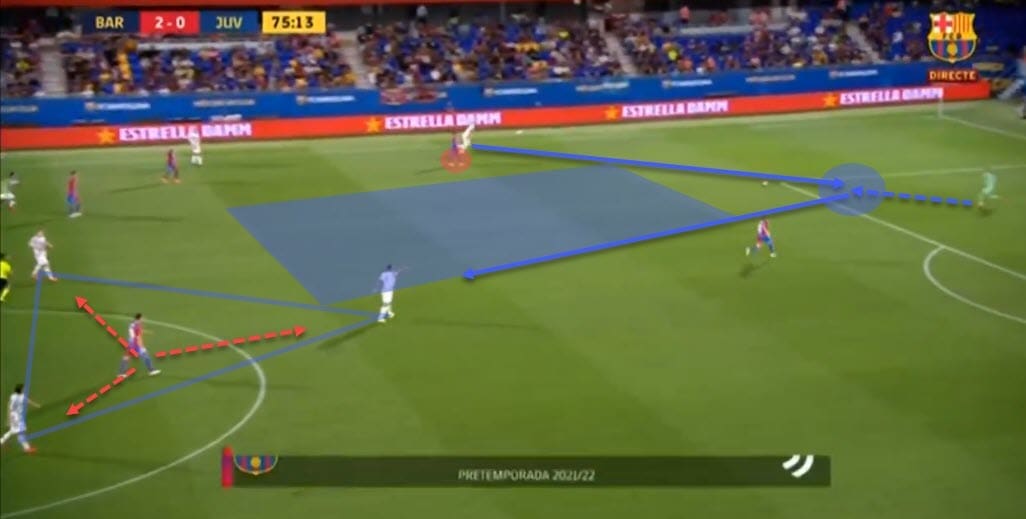
This is something that would not sit well with any coach but also something that can be fully trained. The same cannot really be said for his physique, which has improved massively in the years gone by but is still not enough for him to shrug players off the ball.
Instead, bigger and stronger opponents will naturally be able to shield the ball from Puig, which would be very harsh to take as a big flaw in his profile. Still, a coach like Koeman values these things immensely and so it’s only fair to assume this is indeed something he takes into account when opting against playing the 22-year-old.
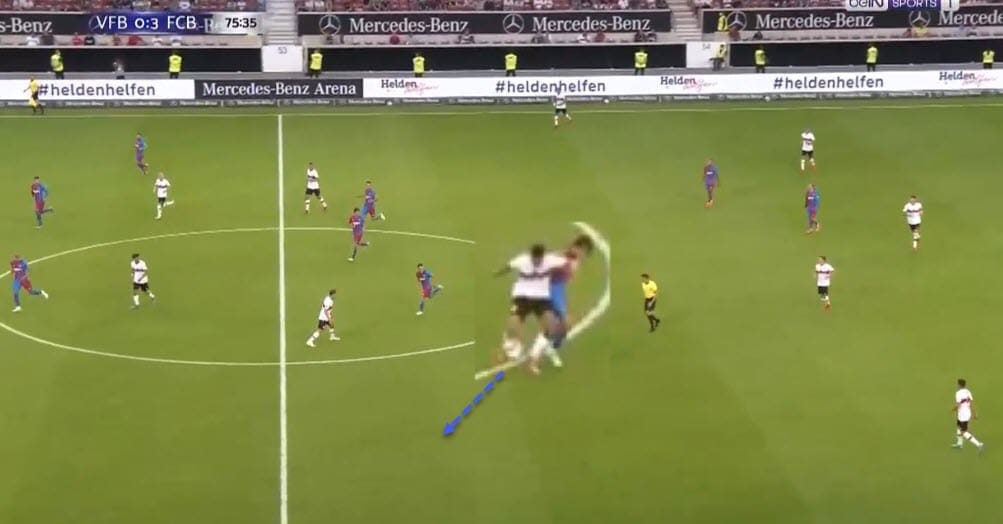
Above, we can see an example of Puig getting shrugged off by the ball-carrier when he attempted to engage in a defensive duel and recover possession.
Conclusion
Riqui Puig is a prototype Barcelona midfielder in so many different aspects. From ball progression, technical ability, close control, vision and general footballing IQ, it’s safe to say the 22-year-old fits Blaugrana’s tactics to a tee. However, no one is perfect and this is especially true for younger players.
There’s one more aspect of his profile I’d like to highlight, albeit to a lesser extent as this is a flaw that doesn’t happen nearly as often. Puig’s passing is usually crisp despite being very courageous and creative. But on occasion, he will make a very ‘casual’ mistake by switching off and misplacing a seemingly very simple sequence.
Take the following two actions as examples. In both, Puig was supposed to deploy a ball he’d normally hit with ease. However, he misjudges the situation and the pass ends up giving possession back to the opposition.
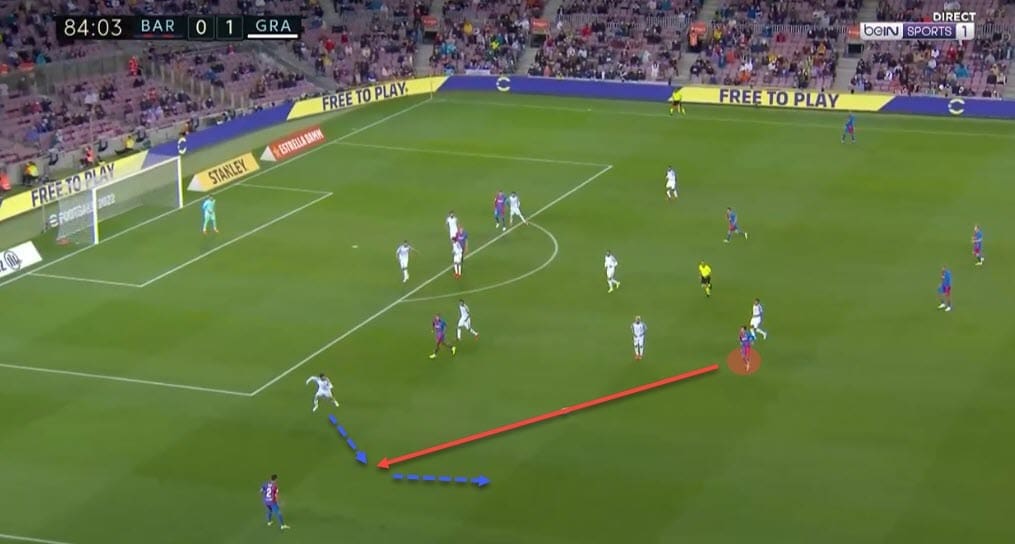
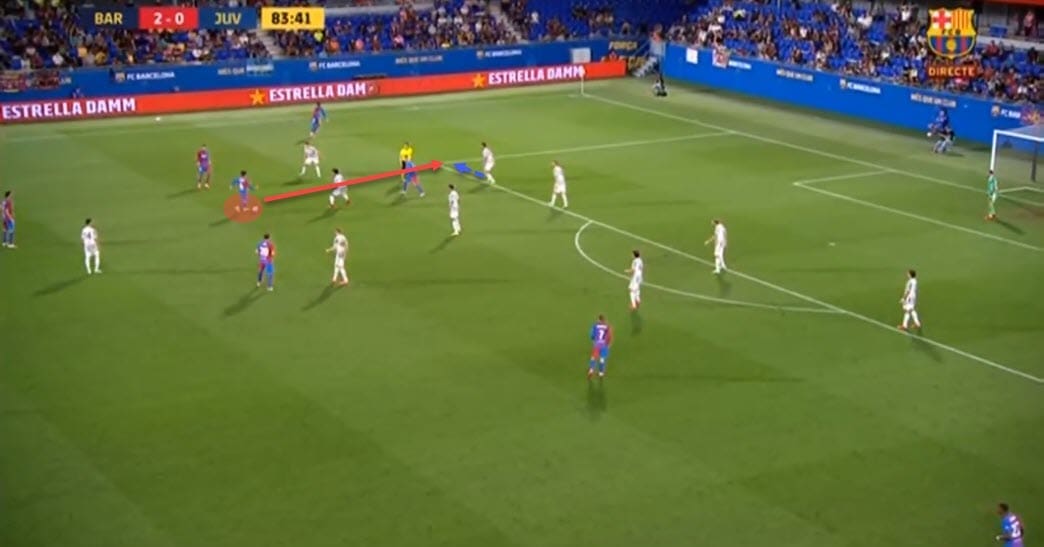
As a whole, some of these aspects could be seen as nitpicking but for a player of his quality, that is the reality. The only way to further improve is to master the difficult and often unmeasurable aspects of the game.
Once that happens, Koeman won’t have an excuse not to play him anymore. Either that or he gets sacked before realising he has a gem in his ranks. Both options are very possible given the current situation at the Camp Nou and Puig’s potential.






Comments